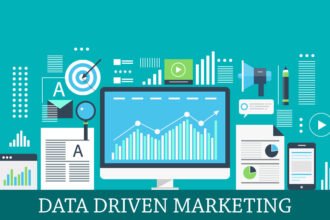I was inspired to write something this week on the need to get people to collaborate by a post Jim Harris wrote called The Business versus IT—Tear down this wall! and the response Gary Cokins made in That Wall Dividing IT and Users.
I was inspired to write something this week on the need to get people to collaborate by a post Jim Harris wrote called The Business versus IT—Tear down this wall! and the response Gary Cokins made in That Wall Dividing IT and Users. Both Jim and Gary make the point that collaboration between business and IT organizations and people is essential if we are to make progress while Gary asked if business analytics was both something that required collaboration and fostered it. And these two great posts made me think of a topic I often cover in my workshops and speeches – the need for a three-way dialog between business, IT and analytic experts.
Now my focus is on the effective automation, management and improvement of operational business decisions – Decision Management. I believe passionately that Operational decision-making can and should be a corporate asset. But doing so requires a unique collaboration – not just between the business and IT but between the business, IT and analytics. Operational decisions have some specific characteristics that drive this.
- First they are business decisions. Even though each decision is small, their business impact is great because there are so many of them. Because they are business decisions, the definition of what makes a good decision or a bad decision is driven by the business. And the actions that can be taken, the logic that should be followed, the policies and regulations are all specified by and understood by the business.
- Second they are high volume, low latency decisions – decisions that must be taken often and taken quickly. This means automation, it means the decision making must be deployed into a production or transactional system like your website or your CRM system. To make this work, IT must be part of the solution.
- Finally they should be analyzed analytically, made by the numbers wherever possible and continuously improved. This means analytics expertise is going to be required and, increasingly, this means data mining and predictive analytics expertise which means analytic experts.
But these three groups don’t have much of a history of collaborating. As Jim and Gary point out, IT departments and business users are often on a different page with IT struggling to support changing business needs while business people get frustrated at their systems. Analytics people often focus on the accuracy of their model not the business outcome – they produce models that considered best because they have the best statistical measures not because they produce the most profitable result. And the way analytics people access and analyze data and the complexity of the models they produce are not always compatible with the way production systems work, resulting in models that take 6 months or more to implement or that are simply too complex for IT to use. Meanwhile the IT folks who design systems and specify enhancements lack the kind of analytics skills that would let them see how analytics could improve the systems they are working on. This lack of mutual understanding and of collaboration simply won’t get it done with decision management.
Getting these three groups into a conversation, getting them thinking about collaborating is key. The business folks have to identify the decisions that matter to their business and define good and bad decisions. The IT people have to be able to explain how the production systems that use those decisions work and bring the business people inside, allowing them to define and manage the logic of these decisions (using business rules technology, for instance). Analytic teams need to see the business need, talk to IT about the data available and see what kinds of models they can build that will result in better business outcomes while still being deployable. And if there are ways the systems could be improved to get better analytic results (and so deliver better business results), then this needs to be a three-way conversation. You get the picture.
Better business outcomes is everyone’s objectives. When it comes to the critical run-the-business operational decisions, all three legs of the stool have to participate.







